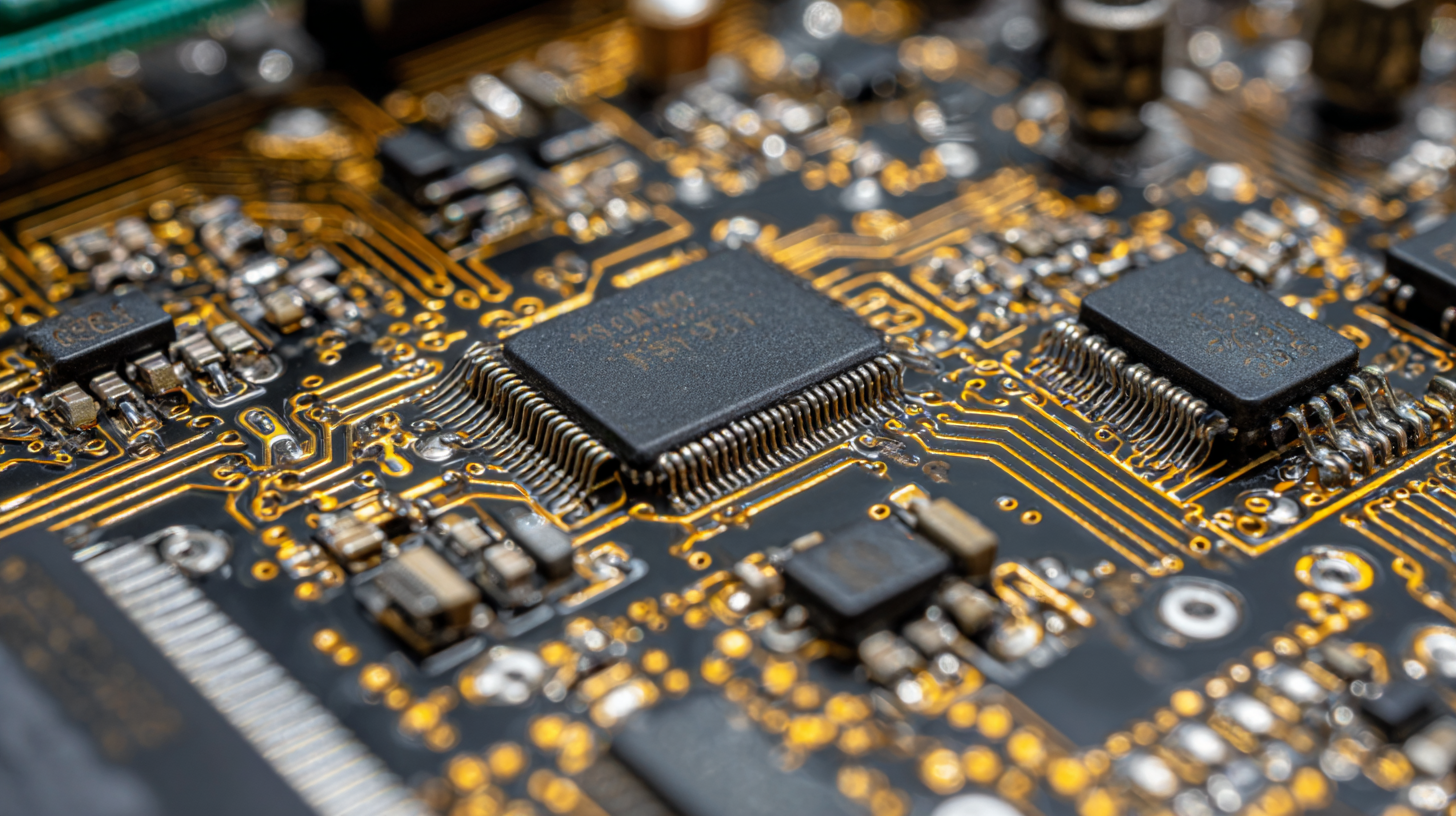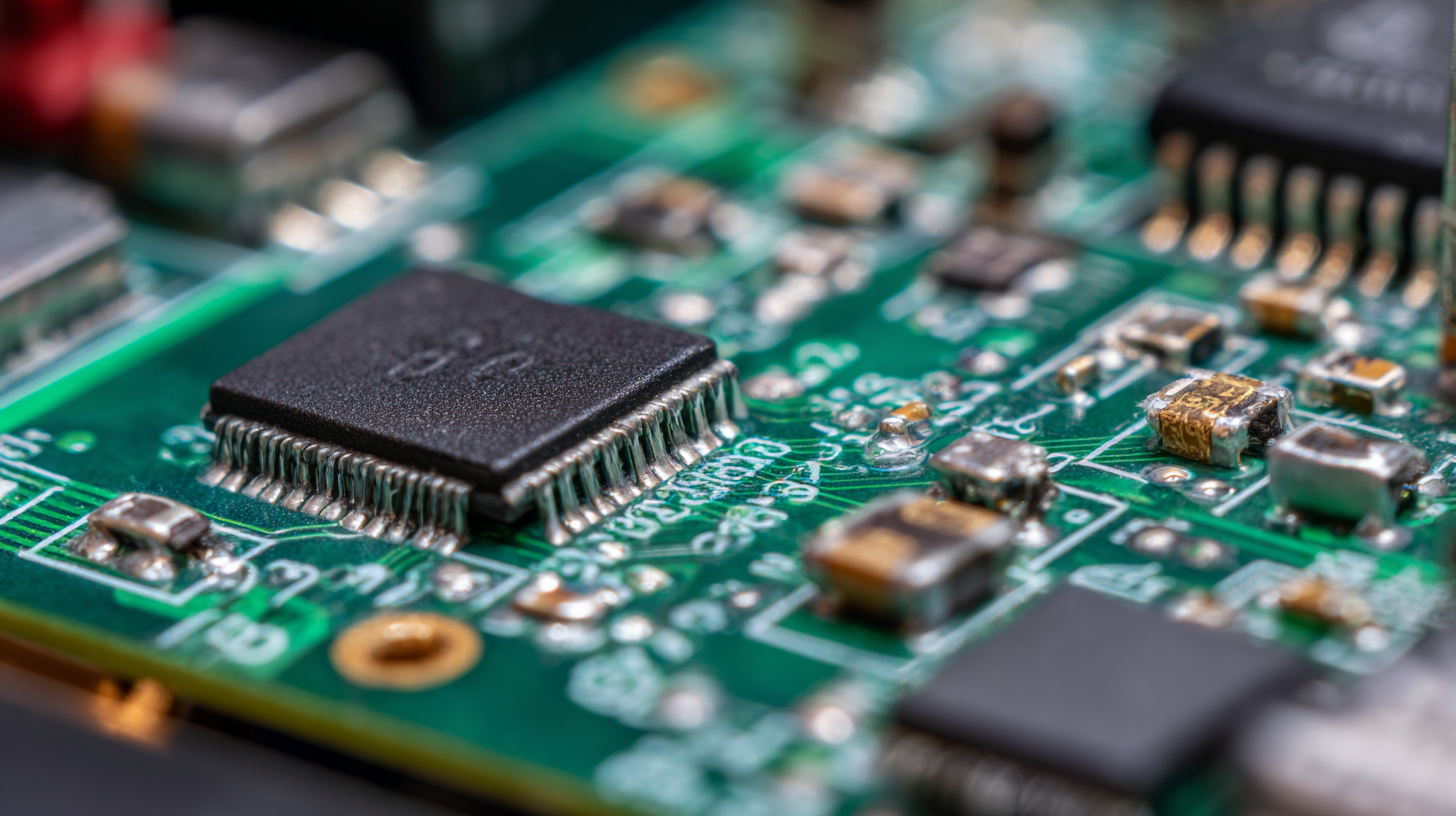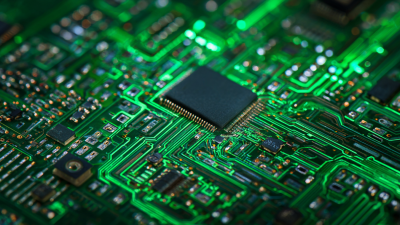As the electronic industry continues to expand at an unprecedented pace, mastering the art of circuit board solder has become essential for enthusiasts and professionals alike. According to a recent report by Markets and Markets, the global electronics market is expected to grow from $1.77 trillion in 2021 to $3 trillion by 2026, highlighting an immense demand for skilled individuals proficient in soldering techniques. Effective circuit board soldering not only ensures the reliability and longevity of electronic devices but also contributes to cost savings in production. With advancements in technology, traditional soldering techniques have evolved, necessitating a deeper understanding of various methods, including surface mount technology (SMT) and through-hole soldering. This article aims to provide electronics enthusiasts with essential techniques to enhance their soldering skills, ensuring they stay competitive in a rapidly growing industry.

Understanding the basics of circuit board soldering is crucial for electronics enthusiasts looking to build and repair their own devices. Soldering is the process of joining electronic components to a circuit board using a filler material, typically composed of tin and lead or lead-free alternatives. To get started, having the right tools and materials is essential.
A quality soldering iron, with adjustable temperature settings, allows for precision and control. Additionally, solder, flux, and desoldering tools help ensure a clean and efficient soldering process.
In terms of materials, the selection of solder is pivotal. Lead-free solder is a popular choice due to increasing health and environmental concerns. Other important components include soldering flux, which improves the flow of solder and prevents oxidation during the soldering process. Furthermore, anti-static wrist straps protect sensitive electronic components from static damage. By understanding these tools and materials, enthusiasts can achieve better soldering results and enhance their skills in circuit board assembly and repair.
In mastering circuit board soldering, temperature control plays a crucial role in achieving optimal results. Selecting the right soldering iron involves not just choosing a suitable power rating but also ensuring precise temperature management. Variability in temperature can lead to weak solder joints or even damage to sensitive electronic components. Therefore, soldering enthusiasts should prioritize tools with adjustable temperatures and reliable heat consistency to gain the best outcomes in their projects.
Moreover, the design and compatibility of soldering tips can further influence the effectiveness of temperature control. High-quality tips can transfer heat more efficiently, reducing the likelihood of overheating components while ensuring adequate heat is applied to the solder. Alongside this, understanding the thermal properties and requirements of different materials can make a significant difference in the process. By paying meticulous attention to temperature control details, electronics enthusiasts can enhance their soldering techniques and ensure the longevity and reliability of their electronic creations.
Soldering is a fundamental skill in electronics, and understanding the two primary techniques—through-hole and surface mount—can greatly enhance an enthusiast's ability to create reliable circuit boards. Through-hole technology (THT) involves inserting components into drilled holes in a PCB and soldering them from the underside, providing strong mechanical connections, making it ideal for larger components that require robust support. Recent rapid fatigue testing has shown that THT joints can be evaluated quickly, offering insights into their long-term reliability in various applications.
In contrast, surface mount technology (SMT) places components directly on the surface of the PCB, allowing for higher component density and smaller footprints. The advancements in soldering techniques include the use of reflow soldering, which applies heat to melted solder paste, creating strong solder joints while minimizing issues like flux residue interacting with humidity. As the industry continues to evolve, the integration of artificial intelligence for visual inspection and sustainable manufacturing practices is becoming increasingly important, enhancing the quality and reliability of solder joints in modern electronic devices.

When engaging in circuit board soldering, safety should always be a top priority. The act of soldering can release harmful vapors and fumes, and exposure to heavy metals can pose health risks. Therefore, it is essential to create a hazard-free environment. Utilize proper ventilation techniques by working in a well-ventilated space or using fume extractors to minimize exposure to harmful substances. Additionally, wearing personal protective equipment such as safety goggles and gloves can further protect against splashes and physical contact with hot solder and hazardous materials.
Incorporating safety practices is not just about personal protection; it also extends to the workspace. Ensure your work area is organized and free of flammable materials, especially when using soldering equipment that may generate heat. Keeping a fire extinguisher nearby and knowing how to handle emergencies adds an extra layer of security. Moreover, ensure that all tools are in good condition and suitable for the specific type of soldering task at hand to prevent accidents. By prioritizing safety, electronics enthusiasts can enjoy and excel in their soldering projects without compromising their well-being.

Soldering is a foundational skill for electronics enthusiasts, but even the most experienced can encounter common issues that can derail their projects. According to a report by IPC, an association connecting electronics manufacturers, nearly 20% of defects in electronic assemblies are attributed to erroneous soldering techniques. This statistic underscores the importance of understanding and troubleshooting typical soldering problems to ensure quality and reliability in electronic devices.
One common issue is cold solder joints, which occur when solder does not melt properly, resulting in poor electrical connections. To avoid this, ensure your soldering iron is at the correct temperature—typically around 350°C (662°F). This not only ensures better flow of solder but also helps in achieving a more reliable connection. A tip for troubleshooting is to reheat any suspicious joints and add a little fresh solder to enhance the joint's integrity.
Another frequent problem is solder bridging, where solder unintentionally connects two adjacent pads, potentially causing short circuits. To prevent this, use a smaller gauge of solder, and apply it sparingly. If you do notice a bridge, a practical tip is to use a desoldering pump or solder wick to remove excess solder carefully before redoing the connection, ensuring clean and functional joints.






„Thanks to the LUVIR technology, the solder resist process could be switched directly from the previously used mask exposure to direct exposure. As an outstanding digital solution on the market, this technology has been able to demonstrate fast process times and superior quality on our certified conventional ink in production. This allowed us to fully digitize the solder mask process at low cost – without process or ink adjustments. An excellent benefit to our production in Rot am See.“
Ralf Göhringer (Head of Production WE Rot am See)
I would definitely recommend the Limata machine and team for a future company purchase
Michael Greenaway
Compunetics Inc.
“The Limata ldi has been amazing!! Best thing we did was buy this machine”
Richard Brady
GM
Circuitlabs
“Since 2019, we have been running the Limata X1000 LDI system (including LUVIR for solder mask imaging) in daily production as an addition to our current process with film. The machine was capable of properly exposing Taiyo PSR-4000 BN (DI) solder mask types on normal to high-copper boards using a new and unique direct imaging process. The machine operating interface is very user friendly which allowed for a quick technical training curve. The pre-registration processing reduced several seconds of production time at every print. Limata support and service staff is incomparable. They supported our team every step of the way at basically any time of the day or night, with literally, an immediate response time, customizing the software interface to best fit our Operations and needs.
We have exposed more than 8,000 prints since end of October, on various solder mask colors and some resist film panels. Limata, has proven to be very capable and innovative. They are a strong contender in the industry.
We have very much enjoyed this project, and working with the team!
Thank you Limata for the continued support and being a part of our growth.”
Bill Sezate
Vice President, GM
Summit Interconnect
As a replacement to our current contact exposure process with film, the LIMATA X2000 system including LUVIR-Technology was capable of properly exposing non-LDI solder mask types using a direct imaging process. The machine offers cutting edge software with a very intuitive operating interface which allowed for quick technician training curve. The dual drawer system combined with pre-registration processing reduced several seconds of production time at every machine cycle. Limata support and service staff is world class. They added software patches to keep production running at shortest possible response times, customized the software interface to best fit our in-house Operations system, and even wrote a step-by-step machine processing manual. As a result of the project, we have exposed more than 16,000 times on various product types and solder mask brands/colors. Limata, in a very short timeframe as a company, has definitely shown they are truly innovative and will be challenging the industry of direct imaging for the top spot.
Kevin Beattie
Process Engineer
TTM Technologies
Forest Grove Division